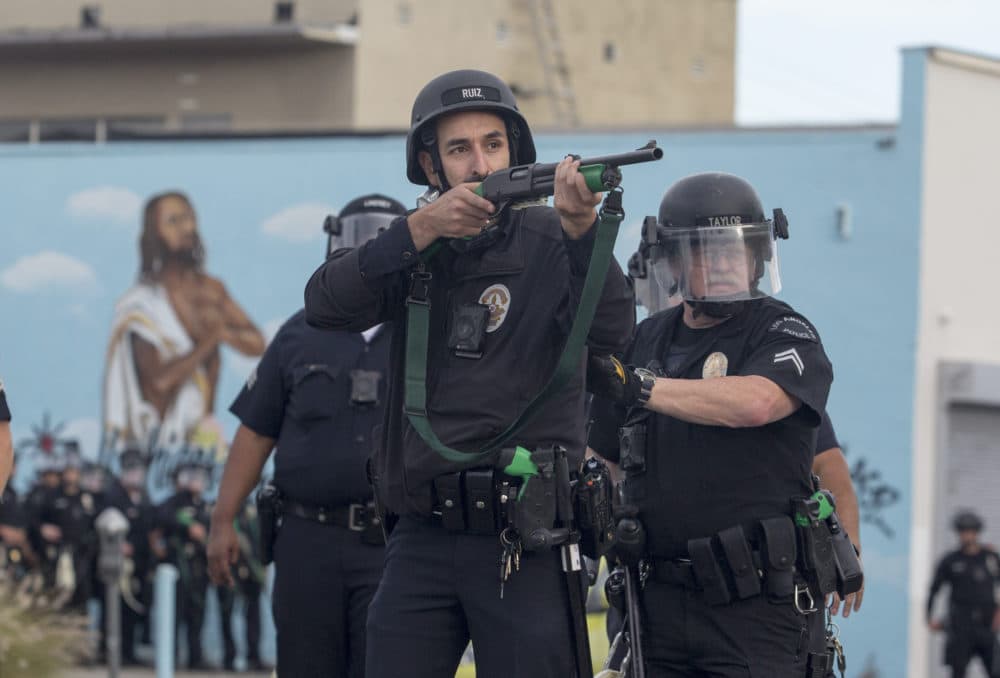Advertisement
Cops Across U.S. Are Using 'Less-Lethal' Weapons. In Boston In 2004, A Woman Was Killed With One

Police across the country are shooting at protesters, journalists and others on the street with what are known as "less-lethal" weapons — projectile guns loaded with rubber bullets, pepper-spray balls and bean bags.
In Boston, a similar weapon killed a college student 15 years ago. That led to police abandoning the weapon.
Emerson College student Victoria Snelgrove was celebrating the Red Sox win over the Yankees in the 2004 American League Championship Series when a Boston police officer shot her in the eye with a weapon known as the FN303, a "less-than-lethal" gun, killing her.
A report later found that "inadequate planning and training, combined with a breakdown of command discipline, set up a situation ripe to produce an unintended result." The city agreed to a $5 million settlement with the Snelgrove family, who also settled a lawsuit against the gun's manufacturer.
More than two years after Snelgrove was killed, Boston police destroyed the FN303 guns, saying they would turn them into sewer caps.
Boston police say they no longer use "less-lethal" weapons for crowd control, though they do still have a version on hand for other situations. Boston's current less-lethal force policy allows for the use of a "Super Sock Round," fired through a 12 gauge shotgun. Supervisors and personnel assigned to the SWAT team are trained to use the weapon.
Accounts and videos across the country in recent days show police firing on people with "less-lethal" weapons. That includes many journalists: Police shot and permanently blinded a photographer in Minneapolis.
Police shot an LA Times reporter and other press with tear gas canisters, despite the journalists identifying themselves as members of the media. An officer in Louisville, live on air, walked toward, aimed and shot rubber bullets repeatedly at a television journalist and her cameraperson.
One 2007 article on a policing forum from a retired police major described the "less-lethal" projectiles as delivering "middle of the road energy (read: motivation to leave, with legs still capable of allowing same)."
But they are not harmless. And they can be deadly. A recent study found that 3% of those shot with projectiles died, and 15% were permanently disabled.
There have been no known reports of Boston police using these types of weapons during the current protests. After the May 31 protest that ended near the State House, Mass. State Police said troopers used "pepper ball projectiles" at a group that was striking a Transit Police cruiser.
Kathleen O'Toole was the commissioner of the Boston Police Department when Snelgrove was killed. She says anytime she sees police departments dealing with "public order" situations, she thinks about the Snelgrove tragedy and the lessons learned from it.
She said only trained officers should use the "less-lethal" weapons, and only when required. But she wouldn't go so far as to say they shouldn't be used at all.
"If somebody is throwing a flaming projectile or a Molotov cocktail in a crowd, some type of device has to be used," O'Toole said. "And I would much prefer officers using a less-lethal device than having only a handgun or a rifle to resort to."
Police, she said, should use the least force required in any situation.
